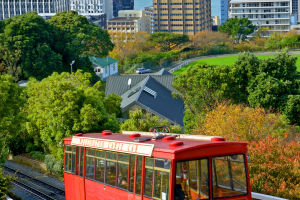Urban overpasses, also known as flyovers or elevated highways, play a vital role in the transportation infrastructure of cities. They are designed to alleviate road congestion and improve the flow of traffic by allowing vehicles to bypass intersections and other obstacles.
As cities grow and expand, the number of level intersections increases, leading to more serious road congestion. The emergence of overpasses is a trend that addresses this problem by providing a convenient and efficient way for vehicles to move through the city.
Overpasses are designed to solve several issues in urban traffic infrastructure.
One of the main reasons for their construction is to avoid conflicts between east-west and north-south roads, including national highways. Additionally, overpasses can also provide a solution for areas with limited space for road expansion.
However, it is important to note that overpasses should not be built without proper planning and design. They must be stable and safe to use, which is why the slope design must be carefully considered.
A steep slope can cause discomfort for drivers and increase the risk of traffic accidents. To alleviate this, designers often incorporate a long and gradual slope, which can also reduce the number of traffic accidents.
Roundabouts are a common type of urban overpass, characterized by at least one floor of the overpass being at the roundabout level. They are effective in handling multi-directional intersection traffic and can resolve conflicts between main roads and branch roads.
Roundabouts can be built on the ground, on viaducts, or even in tunnels. They can be designed in various shapes such as circles, ovals, or square polygons.
Roundabouts have many advantages, such as a simple design structure, the ability to accommodate multiple branch lines, a beautiful and harmonious appearance, convenient vehicle U-turns, and low construction costs.
They are a popular choice for cities and towns with small traffic volumes to solve the problem of traffic congestion.
However, roundabouts also have their limitations. They may not be big enough to fundamentally eliminate crossing conflict points under heavy traffic flow, and vehicles passing through the roundabout must slow down and go slowly.
Additionally, it can be difficult to realize the interworking of the upper and lower layers as the main lines. If fast traffic in multiple directions is a priority, the scale requirements of the roundabout will be much larger, leading to multi-story, multi-ramp structures that occupy a lot of space.
In conclusion, urban overpasses, particularly roundabouts, play a vital role in the transportation infrastructure of cities by improving traffic flow and reducing congestion.
However, they should be designed and built carefully, and have limitations in certain situations. They are best suited for smaller cities and towns with less traffic volume and are not recommended for expressways or intersections with high traffic flow in all directions.


